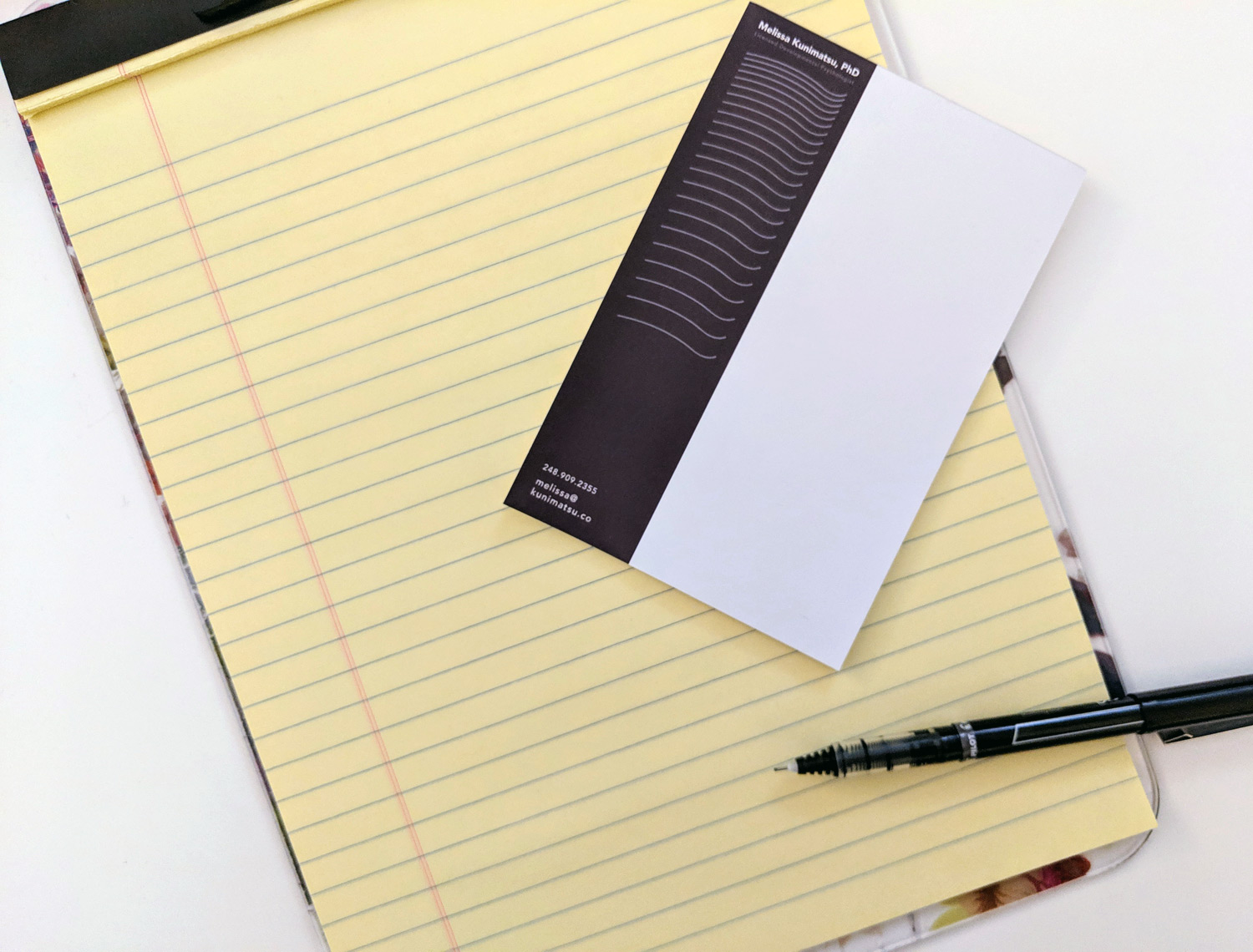COVID-19 Journal Exercise(download .pdf version)
With so much disruption and uncertainty happening all at once, it’s very easy to feel completely overwhelmed right now. For anyone struggling with anxiety as it relates to your plans, preparations, or day-to-day activities amidst this outbreak, here is an exercise that I have encouraged my clients to do to help with coping.
I’m calling this exercise “Getting to Know Your Plan B,” because I think all of us are currently existing in a state that is probably very different from what we would prefer to be doing. Plan A was not having to deal with a global pandemic. Plan A was being able to live our normal day-to-day lives without interruption, inconvenience, or a sense of impending doom. Plan A is currently not an option. We are ALL operating on our Plan B’s right now.
Before you begin this exercise, take time to validate any negative emotions that are happening right now, as they are most likely appropriate given the situation. A primary function of our emotions is to react to the things going on around us and to communicate that reactive information about the things happening (or potential things that could happen). Currently there are, in fact, a lot of things happening in our environment and those things should almost certainly be provoking a variety of emotions (fear, anxiety, sadness, loneliness, shock, confusion, etc.). Make space for the occurrence and experience of these feelings to be considered acceptable and appropriate.
That said, make sure you conclude this validation by recognizing that there is a massive difference between having an expected and appropriate INTERNAL emotional reaction vs. engaging EXTERNALLY in reactive and (often) inappropriate emotion-driven actions. An emotional reaction almost always compels us towards taking some kind of action, but the specific things that we think we should do when experiencing a strong emotion are not always going to be the most helpful or practical (e.g., compulsive toilet paper hoarding). Feelings and actions are separate and distinct things and you have much more control over your behavior than you do over the feelings you experience.The prompts/steps in this exercise are going to be mostly behavior-focused, so please keep this idea in mind.
The following prompts are designed to help you get really familiar with, and hopefully get a stronger sense of security from, your specific Plan B. You’ll be asked to identify any steps that you have already taken to prepare for this crisis, as well as highlight potential additional actions you can take as we all wait to see how this situation unfolds. Additionally, there will be prompts focused on strategies to lessen potential anxiety-induced impulses to switch to a Plan C or D, (or E, F, or G, because anxiety can be like that sometimes).
This exercise should result in an actual physical document that you can reference during those times that your anxiety “spikes” and you may be less likely to think or behave as rationally as you would under different circumstances. Think of it as a “break glass in case of anxiety” resource that you’ll be creating for yourself, something that you can direct your attention to and rest your eyes on when you’re feeling overwhelmed. Keep the document readily accessible and consider including other household members in the creation of it, if that action would be helpful.
Getting to Know Your Plan B
1. What aspects of my Plan B are already taken care of?
List off all of the preparation/precautionary actions that you have already taken up to this point in time. You can list these a single items, but I recommend grouping your actions into broader categories of current concerns (e.g., finance, work/school obligations, food, household supplies, physical health, childcare, within household relationships, non-household relationships, mental health/self-care, etc.)
2. What does my Plan B currently look like?
List the behaviors you are currently practicing or maintaining as part of your new routine and describe what your currently operating plan of action is regarding any areas of concern. Again, I recommend grouping the behaviors in your action plan into broader categories so that when specific worries arise, you can reference this list. Also make sure you list off any services or amenities that you still have access to (e.g., grocery stores, pharmacies, remote therapy sessions, ways to contact friends/family, etc.). Be sure to include any self-soothing and self-care activities that you are able to practice as well.
3. Is there anything specific that I can reasonably do right now to improve my Plan B
List the activities you have not yet started and/or supports you have not yet accessed but intend to put into action soon and create a step-by-step process or a to-do list that will allow you to get started on each.
4. Vaguely, what might Plan C or Plan D look like? (aka What are more extreme things that I might need to do in the future but don’t need to do right now?)
Begin preliminary brainstorming about what some possible alternative plans of action might look like, should the current situation you are coping with change significantly. A helpful parallel I have drawn for many of my clients is to think about what your different plans are for different types of hurricane situations. We have very different actions steps that we take when a hurricane has entered the gulf vs. when a storm is on track to make landfall in Louisiana vs. when the city has issued a mandatory evacuation for all residents. We don’t immediately jump to the mandatory evacuation plan, but we generally know the steps we would need to take if we had to evacuate.
Remember, there is no need to enact these backup plans immediately, their purpose for right now is to reassure yourself that should additional negative events occur, you will have rational and practical behavior options for how you want to respond. Anxiety tends to say “it’s not enough, you need to be doing more RIGHT NOW,” even when there might actually be nothing more that we can reasonably do at any given point in time. Consciously remind yourself that you have created these backup plans and they will be there IF you need them. A verbal reminder like “if [bad thing] happens, I am prepared to deal with it” might be helpful.
5. What would reasonably prompt me to switch from Plan B to Plan C or Plan D?
List possible variables/changes that could happen that would prompt you to consider deviating or changing your current plan of action from what you described in steps 2 and 3. These variables should be real-world events, tangible things that exist in reality that you can monitor for. To bring back the previous parallel of hurricane plans, we know specific things to be on the lookout for once a storm system enters the gulf, but our operating course of action does not change unless specific circumstances change first (i.e., the storm tracks towards Louisiana, the city issues an evacuation order, etc.).
Again, anxiety tends to make us feel like we aren’t ever doing enough, that there are additional steps that absolutely must be taken, even when we actually are adequately prepared in a practical sense. Essentially this step is to create more objective “cues,” “landmarks,” or “red flags” that you can identify when considering if you need to enact a different plan of action from the one you are currently focused on. Should you experience the worry that you aren’t doing enough (e.g., you have a sudden impulse to buy even more toilet paper “just in case”), check this list first before deciding to take additional actions.
6. What things will help me more easily stick to my Plan B? (aka How can I best support myself in order to maintain my current course of action even when I feel anxious?)
List off any specific coping strategies, self-soothing behaviors, or pleasant activities that will help you pass the time as we all wait to see what happens next. These are also things that you can do if you feel a sudden increase in anxiety.
Here are some specific actions and strategies I have suggested that my clients practice when they start to feel their anxiety increasing:
A. Remind yourself that you are already making progress with your Plan B
Review your current plan, deliberately making note of all the things that you have already done. Consider the possibility that the steps you have taken up to this point are “good enough” for right now.
B. Take instances of fear and reframe them in terms of love or connection
Use any occurrence of anxiety regarding your social relationships (friends, family members, etc.) as an excuse to connect with those specific people directly. This check-in should not be for the purposes of assuring yourself that they are still ok, but rather as an opportunity for you to express positive feelings (e.g., gratitude, love, appreciation, pride, etc.) to that person because you care about them and they are important to you.
C. Ground, ground, and ground some more
Grounding is a general term for behaviors and ways of shifting our attention or speaking to ourselves that reconnect us to our physical body and our body’s location in the present moment. It’s very easy to spiral and get completely lost in racing thoughts when we are anxious, so grounding techniques force us to pay attention to our physical state here and now. Some specific grounding techniques are:
7. What should I do after I finish this list?
Bring your focus back to the immediate moment. You are here, now. Take a minute to reflect on your list, paying special attention to steps 3, 4, and 6, and pick what you would like to do next today. Repeat this step as necessary.
Thank you so much for taking the time to work through this exercise. Wishing you the best as we all navigate through this stressful time.
(download .pdf version)




